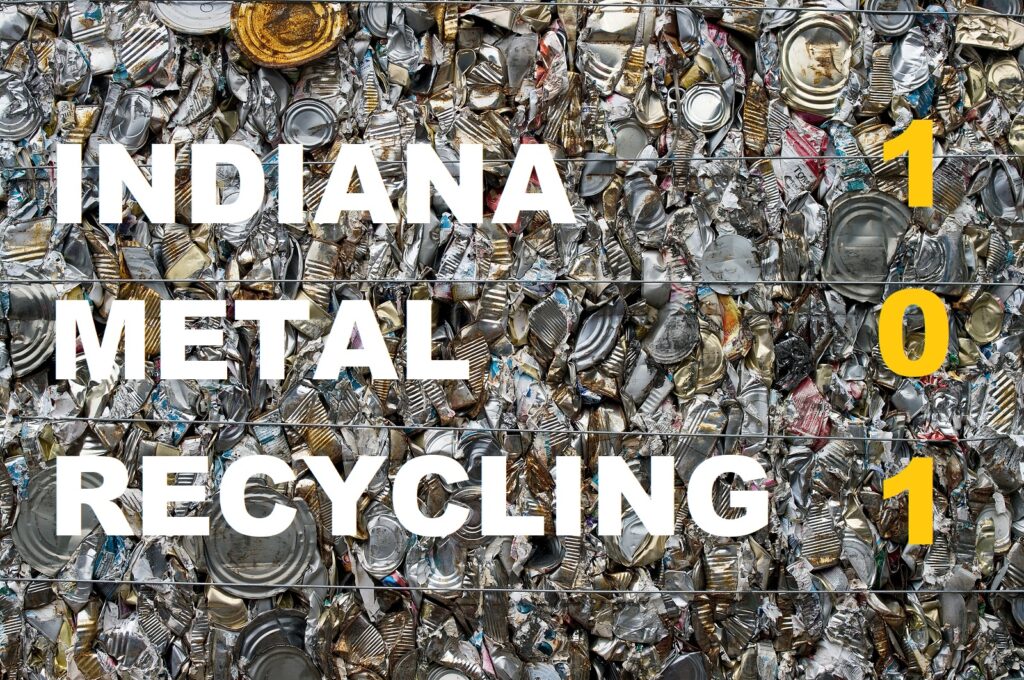Bronze is a common metal alloy that we see all around us, in music, manufacturing, electronic technology, construction, art, and more. Many people confuse brass and bronze even though they are different alloys of copper. Although bronze is primarily comprised of copper, but also contains other constituents like aluminum, manganese, tin, and even arsenic. In fact, there are multiple types of bronze alloys.
Continue reading to learn the five types of bronze alloys and what you can do with scrap bronze in Central Indiana.

Common Bronze Alloys
Bronze is a highly useful alloy, so it is no surprise that it is made in different ways for different applications. Although bronze typically contains mostly copper, it can also contain other types of alloys, depending on the type of bronze alloy it is. The top five most common bronze alloys include aluminum bronze, phosphor bronze, silicone bronze, nickel brass, and copper nickel.
Aluminum Bronze
Aluminum bronze is one of the most common types of bronze alloys. This bronze alloy contains between 6% and 12% aluminum. The remaining alloyed constituents include iron and nickel, usually up to 6% of each, and of course copper. Aluminum bronze is strong and has a high resistance to corrosion. It is commonly used to handle materials that are corrosive, such as toxic fluids, and often used in Marine hardware manufacturing.
Phosphor Bronze
Phosphor bronze is also known as tin bronze, and typically contains between 0.5% and 1% tin. As for phosphorus content, phosphor bronze contains a very small amount, typically between 0.01% and 0.35% phosphorous. However, the phosphorus plays an important part in increasing wear resistance and rigidity. Phosphor bronze is highly applicable in construction and manufacturing because it is strong and has a low coefficient of friction. It is also highly resistant to fatigue and fine grained.
Silicone Bronze
Silicone bronze typically contains around 6% silicone and 20% zinc and is used to coat red bronze and red brass. Red bronze typically contains lower concentrations of zinc but is very similar to red brass. Red brass is strong and highly corrosion resistant.
Nickel Brass
Nickel brass is also referred to as nickel silver because the nickel concentration gives the alloy a bright silver-like color. Nickel brass also contains copper and zinc, and therefore has adequate corrosion resistant properties and moderate tensile strength. For this reason, it is commonly used to make musical instruments, optical equipment, food/beverage equipment containers, and similar items.
Copper Nickel
Copper nickel is also called Cupronickel, which can sometimes be confusing to some. Generally containing between 2 percent and 30 percent nickel, Cupronickel is revered for its high resistance to corrosion and oxidation, as well as its incredible tensile strength and resistance to cracking under stress. This makes it perfect for steamy or moist air environments, which is why it is used heavily in marine equipment manufacturing and ship hulls.
Do you find yourself wanting to get rid of a load of scrap metal like bronze? Sell it all to Garden City Iron and Metal for cash on the spot! Contact us at 1-888-586-5322 to get a free quote from a trusted scrap metal buyer in Indianapolis, Indiana. We accept all metals, regardless of condition!
Related Posts:
Can I Recycle Brass?
Do You Know What Makes Brass and Bronze Different From Each Other?
Tips for Stripping Copper Wire for Scrap Metal


